Termite cause billions of dollars in property damage each year. Let’s talk about the damage that termites can do to your house and how we can spot it. Termite damage is very confined in a short period of time. But in the long run or when we finally notice them, they may have eaten up our whole house. The reason being termites are silent creatures. They keep doing their work and we have no idea. They infiltrate the buildings through gaps and cracks in the facade, eventually causing ceilings and walls to buckle. What do you need to watch out for? Look for the appearance of water damage. maze-like designs in wooden structures. Mud tunnels on your homes foundations. And of course, swarms of termites themselves.
More to read: How to get rid of Termites.
Don’t panic and rush out to kill the termites. You just need to explore different options on how to dispense these minuscule creatures. Termites are not one of those pests that you opt to treat on your own. It doesn’t mean that you can’t do it, but this would require special assistance, adequate amount of erudition and categorical equipment.
What am I dealing with here?
There are many varieties of termites world wide, but our focus today are three main categories of termites that we find attacking our homes, Dampwood termites, Drywood termites and Subterranean termites. The University of California IPM states: Termite pests include subterranean, drywood, and dampwood species. Dampwood termites derive their name from the fact that they live in moist wood, especially in stumps and fallen trees in forests. Drywood termites are common and can survive in very dry conditions, even in dead wood in deserts and do not require much moisture or contact with soil. Subterranean termites are very abundant in most parts of California, even at elevations above 8,000 feet, and live and breed in soil, sometimes many feet below the soil surface.
Termite in Walls Can Damage Your Whole House.
You might notice lots of termite damage in your house. Termites in walls may damage your walls from inside sometimes causing dark “damp” looking spots or peeling paint. Termites can get into your home through wood to ground contact, commonly including door frames and deck posts. Termites are attracted to wood, cellulose materials, warmth, darkness and moisture. They are liable to come through minuscule cracks in the substructure and commence eating up the studs and structure of your home, composed of wood. This can cause incredible damage to your home, and a giant hit to the wallet.
Termites are usually found during a home inspection, for a sale or amidst a big remodel project whether interior or exterior, these silent unwanted guests make themselves at home in our walls and reduce them to dust. Sometimes you can literally pull the walls apart with your hands. In this case the wall must be supported and the entire area remediated of the termites and damaged structure. If you do not have experience in this area it can seem overwhelming. Your home can be made right again, whether you tackle the job yourself, or hire a local contractor and exterminator. The goal is to catch things before they become a huge mess. In this case prevention is worth the cost.
Extreme Termite Damage.
During extreme cases, you might witness termites flying or dead in your home. Mississippi State University Extension says: It takes several years for a termite colony to grow large enough to be able to produce swarmers. If large numbers of swarmers are emerging inside a building, this means that there is a large colony of termites feeding on that building. Note that killing the swarmers does nothing to solve the problem. Swarmers that emerge inside a building will die anyway because they are not able to reach moist ground where they will have a chance to survive and start a new colony. However, the colony that produced them will continue to thrive—unless it is treated. This denotes that termite has penetrated your house. Yes, this is quite frighteningly awful. You might find it as a tough task, but aversion is more preponderant than visually examining your home getting damaged right in front of you.
Finding termite swarmers inside a building is a sure sign the building has an active termite infestation and needs to be professionally treated. Call the pest control company and arrange to have the building inspected and treated.

Termites in Bathroom – Another Issue.
Termites in the bathroom are hazardous. If you’ve noticed a “soft spot” in the floor or it feels “spongy” this of course could be due to rot, these are damp areas. Due to the frequent moisture problems found in bathrooms, termites prefer this place to build their mud tubes and plant their nests. Inefficient or faulty ventilation systems are the cause of high humidity levels in the bathroom as steam is not able to evaporate, which can also cause mold or mildew problems as well. Ventilation is so important to remove unwanted humidity and save the structure of your home. It also improves air quality within the home.
Termites Eating Furniture.
Drywood termites can penetrate deep into your furniture. The first signs you should look for are, traces of powdered wood around the wooden furniture, mud tubes on the walls and a hollow sound when you tap the furniture. Termites can and will eat up your wooden furniture given the opportunity, making it seem even more unsightly and damaged. As a homeowner, you have good reasons to fear termites. This is because they eat all wood based materials from furniture to walls and the floors. They are in the minds of millions of homeowners, including you. Hence all the homeowners point to ponder, “What dont termites eat?”
The Role of Worker Termites in Damage
The University of California IPM categorizes termites for us. Termites are different from most other insects in that, like ants, bees, and wasps, they are eusocial and live in colonies or societies that are highly integrated. Eusocial insects are characterized by three traits: (1) Individuals of the same species cooperatively care for immatures; (2) there is a reproductive division of labor with sterile individuals working on behalf of the reproductives; (3) there is an overlap of at least two generations in a colony so that offspring assist parents during their lifetime.
Termite colonies can vary in size from only two individuals (a mated pair or incipient colony) to hundreds of thousands or perhaps even millions of individuals. Colonies contain several forms or castes, including larvae or immatures, workers, soldiers, nymphs, and reproductives. These castes can be distinguished by physical characteristics.
Worker termites are wingless, soft-bodied, and light caramel in color. They comprise the largest contingent in most colonies and are the individuals most frequently seen when infested wood is examined. Workers are reproductively undeveloped. They are responsible for the care of eggs and immatures; foraging for food; feeding and hygiene of nest mates, including the queen; and construction and maintenance of shelter tubes, galleries, and/or other colonial structures. Workers can also be involved in protection of the colony but are not as fierce as the soldiers.
Soldiers can vary greatly in morphology but, generally, have larger, amber or brownish heads and larger mandibles than workers. They guard the colony and defend it against predators.
Reproductives, or sexual adults, have yellow-brown or black bodies. At maturity, they initially have two pairs of wings of equal size and are referred to as alates. After their swarming flight they shed their wings and establish new colonies. The queen is largest in physical size, attaining mass several times that of workers. Her main function is to lay eggs, sometimes thousands in a single day. A king or male reproductive is always by her side. In the more primitive termites, other individuals are capable of replacing kings or queens if they die.
So they eat your wooden houses – it’s their nature natural role. But don’t put up with it – use special poisons and traps for getting rid of termites and professional exterminator’ help.
{code 416}

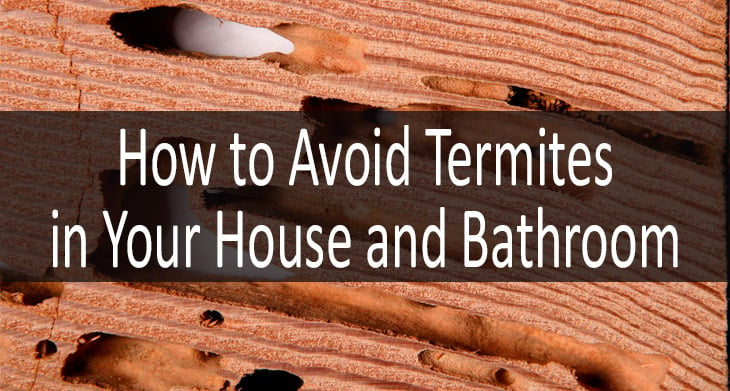
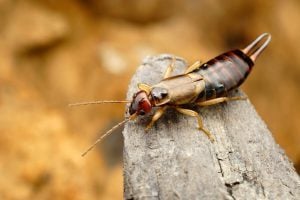
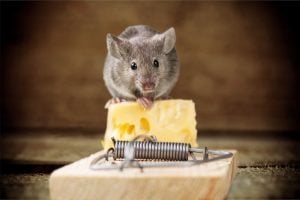
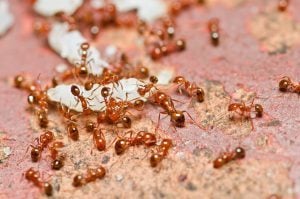
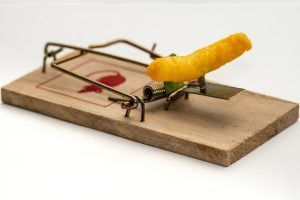
1 thought on “Termite Damage Signs – How Dangerous Is It?”
The section about extreme termite damage is very helpful, especially when it comes to buying a home. You would hate to buy a house only to find out later that it has extreme damage from termites. Knowing what signs to look for makes it easier to spot termite damage, before they destroy an existing or potential home. http://pestcontrolidaho.com/residential-termite-management